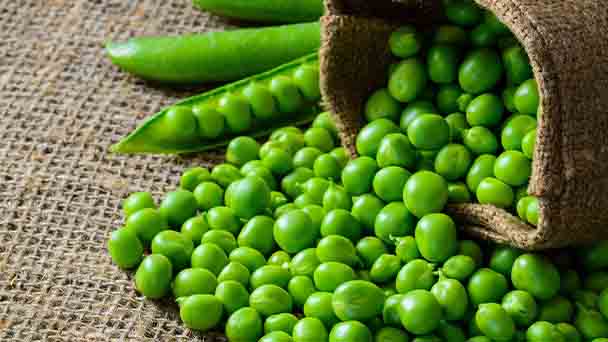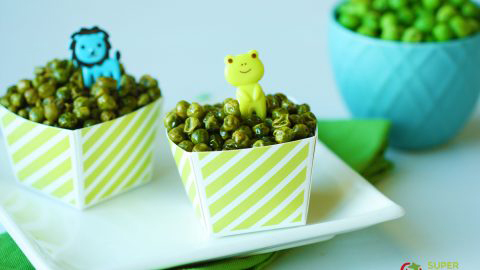Pea Profile
Written by Joy
Nov 06 2020

Pea is an annual climbing herb of the legume family, 0.5-2 meters high. The whole plant is green, smooth and hairless, covered with powder and cream. The leaves have 4-6 leaflets, the stipules are heart-shaped, and the lower edge has thin teeth. The leaflets are ovoid; the flowers are solitary in the leaf axils or arranged in racemes; the calyx is campanulate, and the lobes are lanceolate. The corolla color of pea varies from variety to variety, but mostly white and purple. The ovary of peas is glabrous, and the style is flat. The pods are swollen and oblong; the seeds are round, bluish-green, and turn yellow when dried. Flowering from June to July, fruiting from July to September.
Pea morphological characteristicsPea growth habit and growing environment and distributionPea efficacy and roleEdible value of peasThe nutritional value of peasThe medicinal value of peasPea cultivationCultivation systemLand selectionLoose soil and fertilizeFertilizeTimely harvest
Pea is native to the Mediterranean and Central Asia and is one of the most important cultivated crops in the world. Pea seeds, tender pods, and tender sprouts can be eaten. The seeds contain starch and oil, which can be used for medicinal purposes. They have strong, diuretic and antidiarrheal effects. The stems and leaves can cool and relieve heat and can be used as green manure, feed or fuel.
Pea morphological characteristics
Pea is an annual climbing herb, 0.5-2 meters high. The whole plant is green, smooth and hairless, covered with powder and cream.The leaves have 4-6 lobules, the stipules are larger than the lobules, leaf-like, heart-shaped, and the lower edge has fine teeth. The leaflets are ovoid, 2-5 cm long and 1-2.5 cm wide. The flowers of pea are solitary in the leaf axils or arranged in racemes; the calyx is campanulate, 5-lobed deep, and the lobes are lanceolate. The corolla color of pea varies from species to species, but mostly white and purple, with two stamens.

Pea growth habit and growing environment and distribution
Pea is a semi-cold-tolerant crop. It likes a mild and humid climate and is not tolerant of heat. Pea is a long-day crop, which loves temperature and has poor drought resistance. Pea has wide adaptability to soil and does not require high soil quality. Sandy loam and loam with strong water retention, good aeration and rich in humus are the most suitable. The ph value is 6.0-7.2.Peas are mainly distributed in the central, northeast and other regions of China. The main producing areas are Sichuan, Henan, Hubei, Jiangsu, Qinghai, Jiangxi and other provinces. Peas are native to the Mediterranean and Central Asia Minor regions and are mainly scattered in Asia and Europe.
Pea efficacy and role
Edible value of peas

The nutritional value of peas

The medicinal value of peas
Peas are sweet and have a certain therapeutic effect on an athlete's foot, carbuncle, breast milk obstruction, spleen and stomach discomfort, hiccups, vomiting, abdominal pain, thirst and diarrhea.Pea is sweet and flat in nature, has the effect of promoting urination and detoxification. Peas cooking can produce body fluid to quench thirst, clear breasts and reduce swelling. Juicing and drinking fresh peas can cure diabetes. Pea powder is applied to the affected area to treat carbuncle and hemorrhoids. Green peas and pod peas are rich in vitamin C, which can effectively prevent bleeding gums and prevent colds.
Pea cultivation
Cultivation system

Land selection
Drip irrigation cultivation has a lower demand for soil, which is conducive to the survival of pea seedlings and the growth of crops. Therefore, the soil with a deep soil layer, light soil salinity and medium-fertility can be planted.Loose soil and fertilize
After sowing, the soil should be loosened several times to increase the ground temperature to promote root growth. The pea seedlings are strong and cultivated in autumn. The soil should be cultivated before overwintering to keep the soil and weeds in time after the spring to increase the ground temperature. Before the pea blooms, water small water and fast-acting nitrogen fertilizer to accelerate the growth of pea plants, promote the separation technique, and then loosen the soil to protect the moisture. When the stems begin to sit on the pods, the amount of watering is increased slightly, and phosphorus and potassium fertilizers are added. The soil should always be kept moist during the pod-setting period. Ensure the water is needed for pod development. At the later stage of the pod setting, the bean seedlings should be closed to reduce watering. When the vine plant is 30 cm high, start the stent. Peas are harvested in batches, and fertilizer is applied once for each harvest.Fertilize

Timely harvest
The harvest time is determined according to the way of eating. Generally, peas for grain are harvested 15-18 days after flowering when the seeds are full, dry peas are harvested when 70%-80% of the pods are withered, and vegetable peas are harvested when the tender pods do not appear 12-14 days after flowering. For pea seedlings about 30 days after sowing, the top tender shoots are picked when the seedling height is 18 cm. Those used as fodder are harvested in the blooming period, and those used as green manure should be pressed in time after harvesting the pods.Latest Updated
- Benefits of Bugleweed - 7 Science-backed Health Benefits
- Bugleweed Dangers & Side Effects - Is It Poisonous?
- How to Plant Evergreen Trees - What You Should Know
- When to Plant Evergreens - Grow Guide for Evergreen Trees
- 12 Wonderful Evergreen Shrubs for Your Garden
- 12 Popular Evergreen Plants with Pictures for Beginners
- When And How To Prune A Lilac Bush Like a Pro
- How to Grow & Care for Lilac Vine (Hardenbergia Violacea)
- Japanese Lilac Tree (Syringa Reticulata) Care & Propagation Guide
- Shumard Oak Pros and Cons - What to Know
Popular Articles
- Winter maintenance of Antirrhinum Majus
- How to Grow Terminalia Mantaly Tree
- How to Grow and Care for Crossostephium Chinense
- How to grow Antirrhinum Majus in spring
- Peristeria Elata (Dove Orchid) Profile: Info & Care Guide
- Underwatered Snake Plant (Sansevieria Trifasciata) - Signs And How To Fix
- How to Care for Brazilian Jasmine Plant (Mandevilla Sanderi)
- How to Grow & Care for Graptopetalum Purple Delight in Summer
- Rosa Chinensis (China Rose): Plant Growing & Care Tips
- How to Care for Baby Sun Rose (Aptenia Cordifolia)